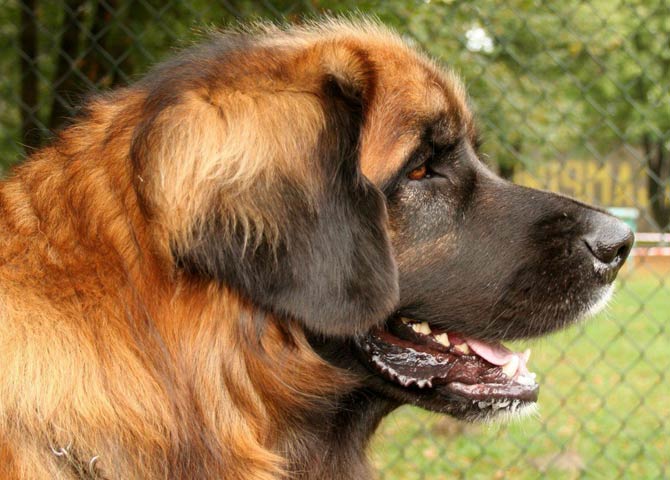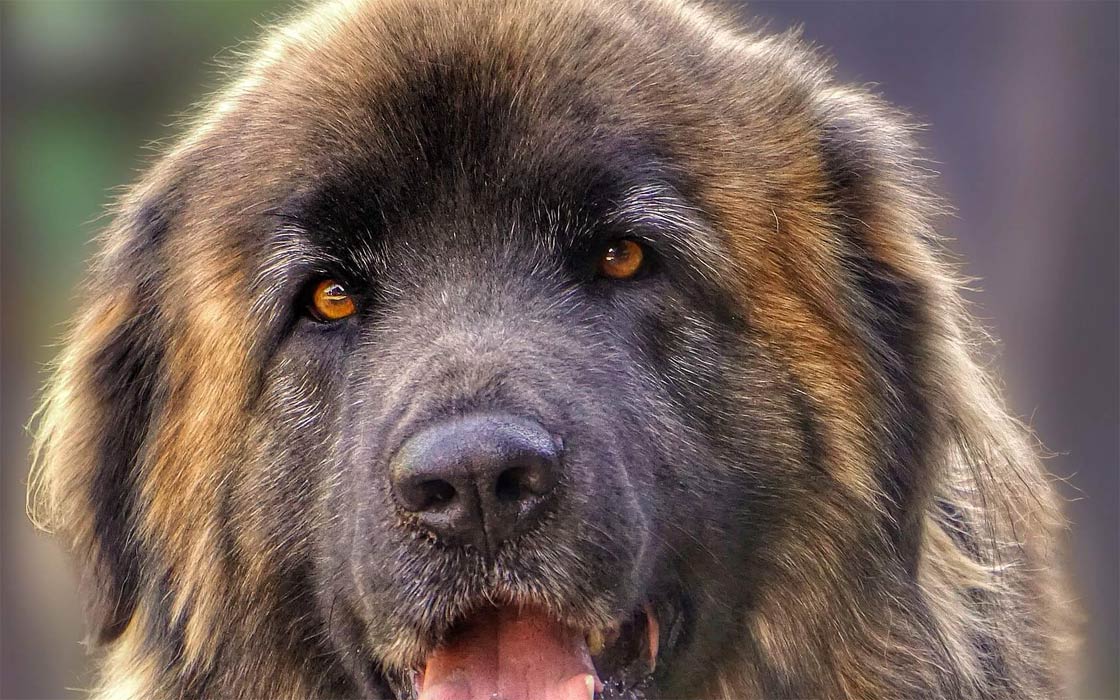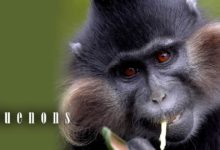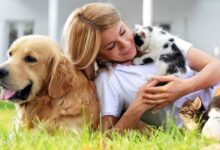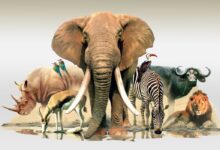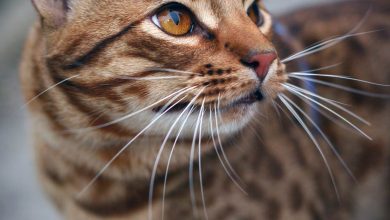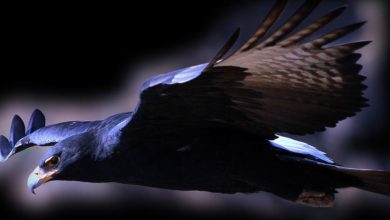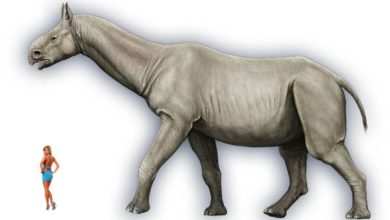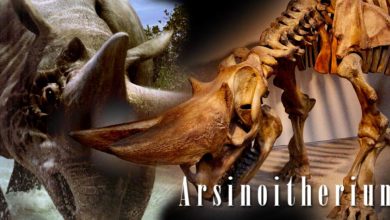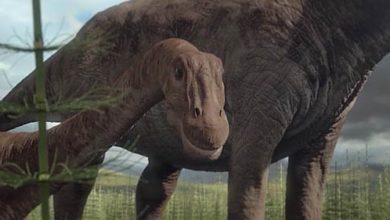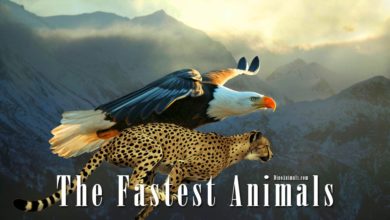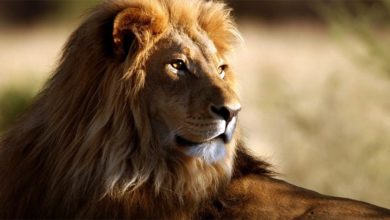Leonberger
A loving giant – this is how the Leonberger can be described in two words. Having a lot of tenderness, a dog can turn out to be a great friend for active people living in a house with a garden, as well as for those living in a block of flats. For a Leonberger, it is not the area it lives in that matters, but the love and attention its owner gives it.
FCI classification
- Group 2 Pinscher and Schnauzer, Molossoid breeds, Swiss Mountain and Cattle Dogs
- Section 2.2 Molossoid breeds, Mountain type.
- Without working trial
- Nickname: Leo
- Origin: Germany
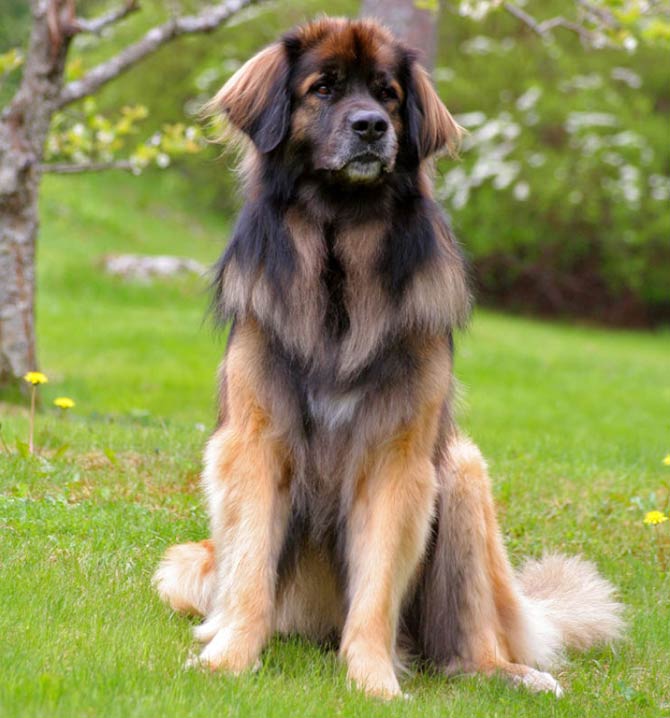
History of the breed
In 1830, a breeder of dogs, their vendor and the mayor of the city of Leonberg (near Stuttgart in the federal state of Baden-Württemberg), Heinrich Essig crossed a female Landseer Newfoundland with a “barry” dog from the Great St Bernard Hospice and Monastery (which would later create the St Bernard dogs). Later, Essig decided to add the Pyrenean Mountain Dog genes; a breed of large dogs with fluffy white fur, known for their friendly nature.
The first dogs called Leonbergers appeared in 1846, having many valuable features of their parents. The breed became popular at several European courts, including Napoleon II Bonaparte, Elizabeth of Bavaria, the Princes of Wales, Otto von Bismarck, Napoleon III Bonaparte, and Humbert I.
The modern dark coat appearance with a black mask was developed in the mid-20th century after other breeds such as the Newfoundland were introduced to the gene pool. This treatment was necessary because the Leonberger population had sharply declined due to the outbreak of two world wars; during World War I, many dogs were left to fend for themselves as breeders escaped or were killed.
Only 5 dogs of this breed survived World War I, and until the outbreak of WWII attempts were made to rebuild it, but the next war led to the almost complete extinction of the Leonbergers. During the wars, dogs were engaged in hauling carts with ammunition and general military service, which significantly contributed to the destruction of the breed.
Originally, Leonbergers were used as farm dogs, for which they received only praise due to their work organization skills and learning abilities. Leonbergers pulled carts in Bavarian villages, and in the early 20th century they were imported to Canada where they worked as water lifeguards. Together with Newfoundlands, Labrador and Golden Retrievers, they perform this function to this day.
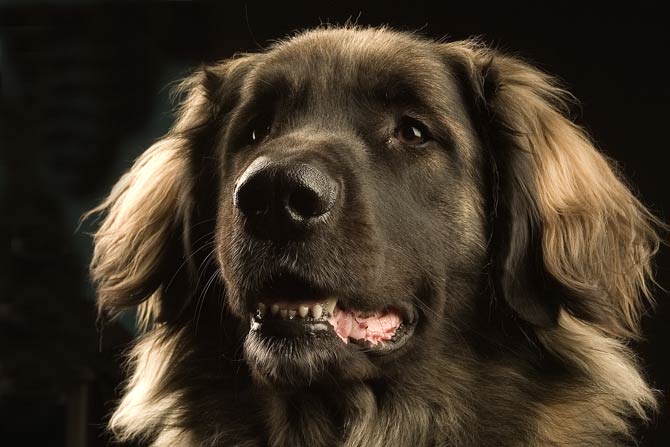
Characteristic
Appearance
Leonberger is covered with a dense, double-layered coat, the dog is large, muscular and dignified. It wears its head proudly, and the muzzle is covered with an impressive black mask, which radiates intelligence, pride and kindness. Although it is an impressive working and companion dog, it works great as a lifeguard (especially water) due to its surprising agility and high level of motor coordination.
There is a clear sexual dimorphism within the breed.
The head is deeper than broader, less massive and more elongated. The eyes can range in color from light brown to very dark brown. They are of medium size, oval in shape, set not too deep, but also not too shallow, moderate spacing. On the top of the head visible close-set, hanging ears of medium size, large fleshiness, lying flat to the head. The tail is very hairy; when the dog is standing, it holds it loosely, while in motion it bends slightly, but does not rise above the line of the back.
Due to its intended use, Leonberger’s fur is very dense and therefore also waterproof. There is a shorter undercoat on the body and thinner on the face and limbs. The outer coat is long, abundant and close-fitting. The entire coat is straight and flat, and older males have a distinctive mane covering the neck and chest, giving the dog a lion-like appearance. Apart from trimming the hair on the paws, Leonbergers are not shorn (this also applies to exhibition dogs).
A black mask is always visible on the face, but the color of the rest of the body varies. There are colors of lion, red, red-brown, sand. Often the tips are black, but this color should not be dominant. The lips, nose and paw pads are all black. The color of brown with a brown nose, black and tan, black, white, silver and the color of the iris other than brown are considered to be defective.
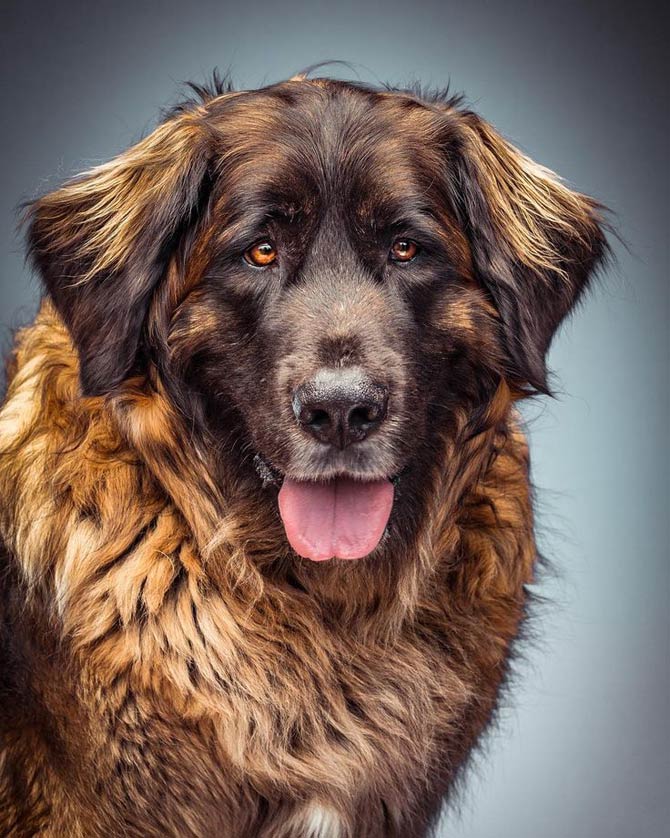
Temperament
The most important feature of Leonberger’s character is family character. A well-trained and socialized dog is self-confident, noise-tolerant, submissive to family members, friendly to children (even strangers), and disciplined when selected by the family as a watchman and bodyguard. It is a solid, loyal, playful, intelligent and well-mannered dog, so it easily adapts to new situations and family members (other dogs).
Grooming and care
Since the Leonberger has a very dense coat, it does not easily shed old hair. As such, it is recommended that you brush it once a week. The exception is the period of mass hair loss – then the animal should be combed daily. The two-layer fur perfectly regulates body temperature, so shaving is not recommended. In addition, newly growing hair twists, making it more prone to matting.
Leonberger needs its family to be happy, so a large garden does not compensate for loneliness. Despite its large size, a dog can live in a small area if the people with whom it lives show interest in it through daily walks and regular training. Despite its innate predispositions, it is recommended that the Leonberger undergo socialization training, which is recommended for all large breeds.
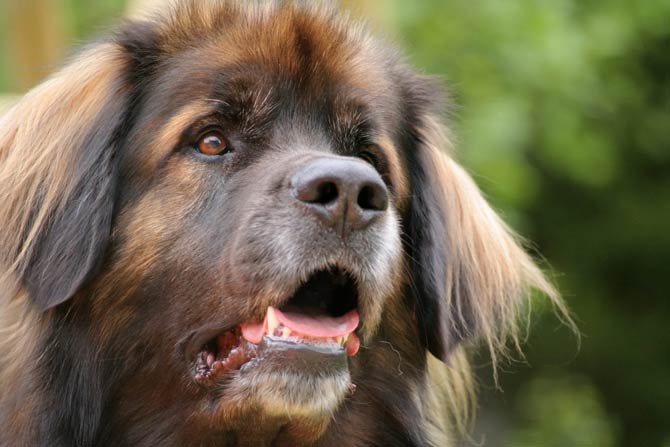
Detailed data / dimensions (size)
Leonberger
- Height at the withers:
- males 72–80 cm (28–31 in) / there are also larger dogs
- females 65–75 cm (26–30 in)
- Weight: 50 – 75 kg (110 – 165 lb) / there are also larger dogs
- Lifespan: 7 – 11 years
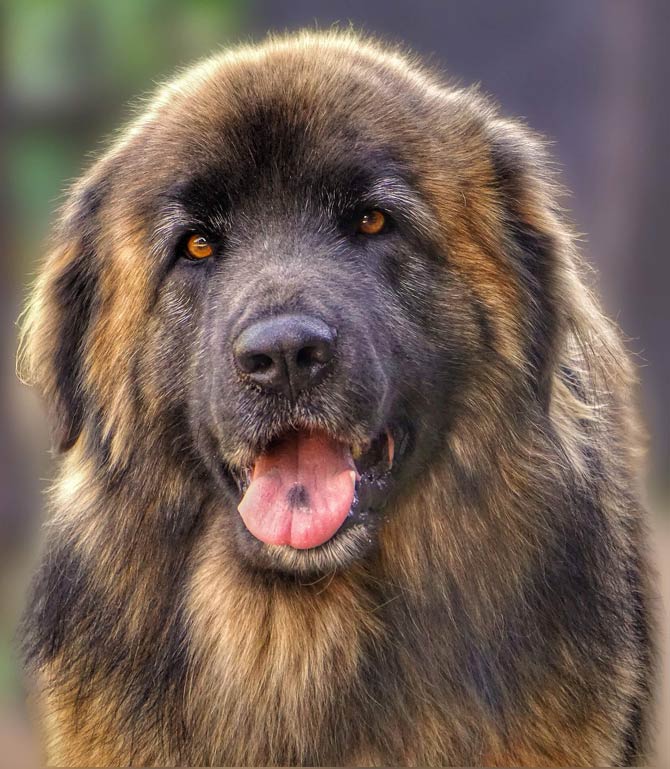
Leonberger – interesting facts
- A popular rumor has it that the Leonberger was bred to be a symbol dog, reminiscent of a lion from the coat of arms of the city of Leonberg
- To this day, the role of Essig in the breed’s origin is being questioned, since descriptions of similar dogs existed at least from 1585, and one of the owners of these dogs was the Austrian Prince Franz Matternich. There is no doubt, however, that Essig created the name of the breed and registered it.
- Modern Leonbergers are believed to be descended from 8 dogs that survived World War II.
- Dogs of this breed are rather healthy, but – as with many large breeds – they suffer from hip dysplasia. Besides, they can inherit heart disease, peripheral syndrome, allergies, digestive problems, cataracts, eyelid eversion, progressive retinal atrophy, thyroid disorders. There are also rumors of very high sensitivity to anesthesia, but this opinion is exaggerated.
- Leonberger is included in the group of dogs working in Crufts organized by the UK Kennel Club, but not at the World Dog Show organized by the FCI.
